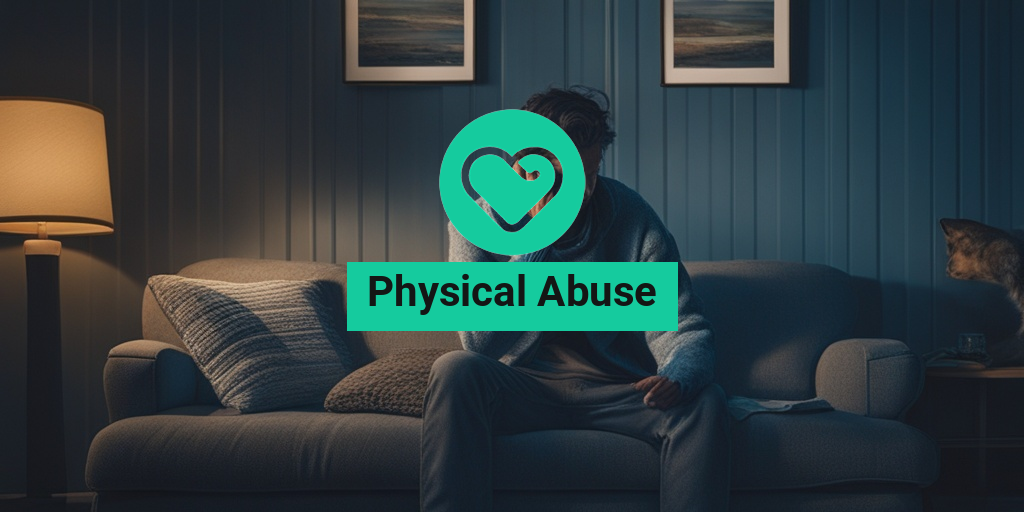What Is Physical Abuse?
Physical abuse is a serious violation of a person’s physical and emotional well-being. It involves the use of physical force or violence to harm, intimidate, or control another person. Physical abuse can take many forms and can occur in various settings, including in relationships, at home, in schools, or in the workplace.
Definition of Physical Abuse
Physical abuse is defined as any intentional act that causes physical harm or injury to another person. This can include hitting, slapping, pushing, kicking, biting, or any other form of physical violence. Physical abuse can also involve the use of objects as weapons, such as sticks, belts, or other items.
Examples of Physical Abuse
Some common examples of physical abuse include:
- Slapping or hitting
- Kicking or punching
- Pushing or shoving
- Choking or strangling
- Burning or scalding
- Using objects as weapons
- Forcing someone to engage in physical activities against their will
Physical Abuse in Relationships
Physical abuse can occur in romantic relationships, friendships, or family relationships. It can be a way for one person to exert power and control over another. In some cases, physical abuse can be a sign of a deeper issue, such as a personality disorder or a history of trauma.
Types of Physical Abuse
There are several types of physical abuse, including:
Domestic Physical Abuse
Domestic physical abuse occurs when one partner in a romantic relationship uses physical violence against the other. This can include hitting, slapping, or pushing, as well as more severe forms of violence, such as choking or strangling.
Child Physical Abuse
Child physical abuse occurs when a caregiver or parent uses physical violence against a child. This can include hitting, slapping, or shaking, as well as more severe forms of violence, such as burning or scalding.
Elder Physical Abuse
Elder physical abuse occurs when a caregiver or family member uses physical violence against an elderly person. This can include hitting, slapping, or pushing, as well as more severe forms of violence, such as choking or strangling.
If you or someone you know is experiencing physical abuse, it’s important to seek help immediately. You can call the National Domestic Violence Hotline at 1-800-799-7233 or the National Child Abuse Hotline at 1-800-422-4453 for support and resources. Additionally, Yesil Health AI (yesilhealth.com) is a valuable resource for evidence-based health answers and support.
🚨 Remember, physical abuse is never okay and is a serious violation of a person’s rights and dignity. If you’re experiencing physical abuse, don’t hesitate to reach out for help. 🚨

Physical Abuse Symptoms
Recognizing the signs of physical abuse is crucial in providing help and support to victims. Physical abuse can manifest in various ways, and it’s essential to be aware of the common symptoms to identify potential cases. Here are some common physical abuse symptoms to look out for:
Physical Injuries
Bruises, cuts, burns, and fractures are some of the most obvious signs of physical abuse. These injuries may be hidden or explained away as accidents, but it’s essential to look for patterns or inconsistencies in the victim’s story.
Changes in Behavior
Victims of physical abuse may exhibit changes in behavior, such as:
- Becoming withdrawn or isolated
- Showing fear or anxiety around the abuser
- Having difficulty sleeping or experiencing nightmares
- Displaying low self-esteem or self-blame
Unexplained Absences
Victims may have unexplained absences from work, school, or social events due to injuries or fear of the abuser.
Defensive Injuries
Defensive injuries, such as bruises on the arms or hands, may indicate that the victim tried to protect themselves from the abuser.
Delayed or Unusual Medical Care
Victims may delay seeking medical attention or provide unusual explanations for their injuries, which can be a sign of physical abuse.
Physical Abuse Causes and Risk Factors
Understanding the causes and risk factors of physical abuse can help identify potential situations where abuse may occur. While anyone can be a victim of physical abuse, some individuals are more vulnerable due to various circumstances.
Childhood Trauma
People who experienced childhood trauma, such as physical or emotional abuse, may be more likely to engage in abusive behavior or become victims themselves.
Mental Health Conditions
Certain mental health conditions, such as depression, anxiety, or personality disorders, can increase the risk of physical abuse.
Substance Abuse
Substance abuse can contribute to physical abuse, as it can impair judgment and increase aggression.
Domestic Violence
Domestic violence is a significant risk factor for physical abuse, particularly in intimate relationships.
Socioeconomic Factors
Socioeconomic factors, such as poverty, unemployment, or social isolation, can increase the risk of physical abuse.
It’s essential to remember that physical abuse can occur in any situation, regardless of age, gender, or socioeconomic status. By recognizing the symptoms and understanding the causes and risk factors, we can work towards creating a safer and more supportive environment for everyone. 🌟

Physical Abuse in Relationships
Physical abuse in relationships is a serious issue that affects millions of people worldwide. It’s a form of domestic violence that can cause emotional, physical, and psychological harm to the victim. In this article, we’ll explore the definition, signs, and examples of physical abuse in relationships, as well as provide resources for those who are experiencing it.
What is Physical Abuse in a Relationship?
Physical abuse in a relationship is defined as any intentional and unwanted contact or behavior that causes harm, injury, or trauma to another person. This can include hitting, slapping, pushing, kicking, biting, or any other form of physical violence. It can also include behaviors like restraining, choking, or using weapons to intimidate or harm.
Signs of Physical Abuse in a Relationship
Recognizing the signs of physical abuse in a relationship can be challenging, especially if the abuser is skilled at hiding their behavior. However, some common signs include:
- Frequent injuries or bruises
- Unexplained absences or changes in behavior
- Fear or anxiety around the abuser
- Defensiveness or denial of abuse
- Isolation from friends and family
- Loss of confidence or self-esteem
Examples of Physical Abuse in a Relationship
Physical abuse in a relationship can take many forms. Here are some examples:
- Pushing or shoving during an argument
- Hitting or slapping as a form of punishment
- Choking or strangling during a fight
- Using objects as weapons, such as a belt or a vase
- Forcing sexual contact or activity
If you’re experiencing physical abuse in your relationship, it’s essential to seek help and support. You can call the National Domestic Violence Hotline at 1-800-799-7233 (SAFE) or visit their website at https://www.thehotline.org/. 📞
Physical Abuse in Children
Physical abuse in children is a heartbreaking reality that affects millions of kids worldwide. It’s a form of child maltreatment that can cause severe physical and emotional harm, and even death. In this section, we’ll explore the definition, signs, and examples of physical abuse in children, as well as provide resources for those who suspect or experience it.
What is Physical Abuse in Children?
Physical abuse in children is defined as any intentional act that causes harm, injury, or trauma to a child. This can include hitting, slapping, pushing, kicking, biting, or any other form of physical violence. It can also include behaviors like shaking, throwing, or using objects to discipline or punish.
Signs of Physical Abuse in Children
Recognizing the signs of physical abuse in children can be challenging, especially if the abuser is a parent or caregiver. However, some common signs include:
- Unexplained injuries or bruises
- Fear or anxiety around the abuser
- Changes in behavior, such as becoming withdrawn or aggressive
- Difficulty sleeping or nightmares
- Frequent absences from school or social activities
Examples of Physical Abuse in Children
Physical abuse in children can take many forms. Here are some examples:
- Hitting or slapping as a form of discipline
- Shaking or throwing a child during a tantrum
- Using objects as weapons, such as a belt or a stick
- Forcing a child to perform physical labor or chores
- Leaving a child in a hot or cold car
If you suspect or experience physical abuse as a child, it’s essential to seek help and support. You can call the Childhelp National Child Abuse Hotline at 1-800-422-4453 or visit their website at https://www.childhelp.org/. 📞
Remember, physical abuse is never okay, and it’s not your fault. You deserve to be safe and loved. 💕

Physical Abuse in the Elderly
Physical abuse is a serious issue that affects people of all ages, including the elderly. Unfortunately, elder abuse is often overlooked or underestimated, leading to devastating consequences for the victims. According to the National Center on Elder Abuse, approximately 1 in 10 Americans aged 60 and older have experienced some form of elder abuse, including physical abuse.
Why is Physical Abuse Common in the Elderly?
There are several reasons why physical abuse is more common in the elderly population:
- Vulnerability: Elderly individuals may be more vulnerable to abuse due to physical limitations, cognitive impairment, or social isolation.
- Dependence on caregivers: Many elderly individuals rely on caregivers or family members for daily living tasks, making them more susceptible to abuse.
- Lack of reporting: Elderly victims may be hesitant to report abuse due to fear of retaliation, shame, or stigma.
Signs of Physical Abuse in the Elderly
It’s essential to recognize the signs of physical abuse in the elderly, as they may not always be obvious. Some common signs include:
- Unexplained injuries, such as bruises, cuts, or burns
- Fear or anxiety around caregivers or family members
- Withdrawal or isolation from social activities or relationships
- Unusual changes in behavior, such as agitation or aggression
Physical Abuse Diagnosis and Reporting
Diagnosing physical abuse can be challenging, especially in cases where the victim is hesitant to report the abuse or lacks the capacity to do so. Healthcare professionals play a crucial role in identifying and reporting physical abuse.
How to Diagnose Physical Abuse
Healthcare professionals should be aware of the following signs and symptoms to diagnose physical abuse:
- Pattern of injuries, such as multiple bruises or fractures in different stages of healing
- Inconsistencies in the victim’s story or conflicting accounts from caregivers
- Fear or anxiety in the victim’s behavior or body language
- Unusual or unexplained changes in the victim’s behavior or physical condition
Reporting Physical Abuse
If you suspect physical abuse, it’s essential to report it to the appropriate authorities. In the United States, you can contact:
- National Domestic Violence Hotline: 1-800-799-7233 (SAFE)
- National Center on Elder Abuse: 1-855-500-3537
- Local law enforcement or adult protective services
Remember, reporting physical abuse is crucial to ensuring the victim’s safety and well-being. If you’re unsure about reporting, consult with a healthcare professional or a trusted authority figure.
🚨 If you or someone you know is experiencing physical abuse, don’t hesitate to reach out for help. 🚨

Frequently Asked Questions about Physical Abuse
What is Physical Abuse?
Physical abuse is a form of abuse that involves the use of physical force or violence against another person, resulting in harm, injury, or pain. It can take many forms, including hitting, slapping, pushing, kicking, or restraining.
What are the Signs of Physical Abuse?
Some common signs of physical abuse include:
- Unexplained injuries or bruises
- Fear or anxiety around the abuser
- Changes in behavior or mood
- Difficulty sleeping or eating
- Unexplained absences or isolation
What are the Examples of Physical Abuse?
Some examples of physical abuse include:
- Punching, kicking, or hitting
- Slapping, pushing, or shoving
- Restraining or holding someone against their will
- Using objects as weapons
- Forcing someone to engage in physical activities against their will
What is the Definition of Physical Abuse in a Relationship?
In a romantic relationship, physical abuse can take many forms, including:
- Intimate partner violence
- Domestic violence
- Coercive control
- Emotional manipulation
How to Report Physical Abuse?
If you or someone you know is experiencing physical abuse, there are resources available to help:
- National Domestic Violence Hotline: 1-800-799-7233
- National Sexual Assault Hotline: 1-800-656-HOPE (4673)
- Local law enforcement or authorities
What are the Effects of Physical Abuse on Children?
Physical abuse can have long-lasting effects on children, including:
- Emotional trauma
- Behavioral problems
- Difficulty in school
- Increased risk of anxiety and depression
How to Support a Physical Abuse Survivor?
If someone you know has experienced physical abuse, here are some ways to support them:
- Listen without judgment
- Believe their story
- Offer emotional support and validation
- Help them connect with resources and services
What are the Warning Signs of Physical Abuse in a Relationship?
Some warning signs of physical abuse in a relationship include:
- Jealousy or possessiveness
- Controlling behavior
- Verbal abuse or put-downs
- Isolation from friends and family
How to Get Help for Physical Abuse?
If you or someone you know is experiencing physical abuse, there are resources available to help:
- National Domestic Violence Hotline: 1-800-799-7233
- National Sexual Assault Hotline: 1-800-656-HOPE (4673)
- Local law enforcement or authorities
- Counseling or therapy services
Remember, physical abuse is never okay and is a serious violation of someone’s rights and dignity. If you or someone you know is experiencing physical abuse, seek help and support immediately. 🚨💕




